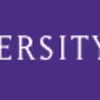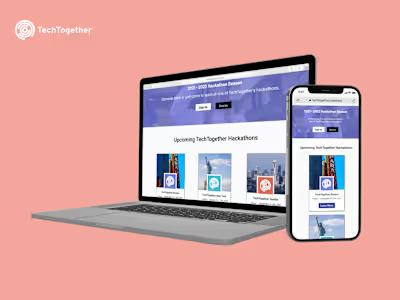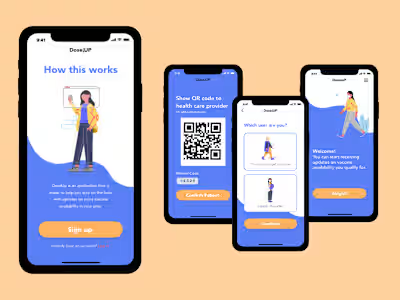Information Architecture Updates for Students with Disabilities
Project universal.ly was started at the University of Washington (UW) to help research and iterate on solutions that can help streamline disability accommodation processes for students in higher education.
Introduction

11% of US undergraduates reported having a disability according to a demographic study by the US Department of Education (2016).

24% of students with reported disabilities actually received the proper accommodations they needed.
With the increasing number of students pursuing higher education, there has been a greater demand on universities to provide the proper accommodations. Despite expanded efforts to provide better academic resources and accommodations, the process of applying for accommodations can be confusing and oftentimes entail a several weeks-long waiting period, with no guarantee it'll be implemented properly.
In the context of the University of Washington (UW), student disability accommodations come in the form of the Disability Resources for Students (DRS) Office - but an equivalent of this exists in all higher education institutions throughout the USA, as required by ADA laws.
So, how might we streamline disability accommodation processes for students in higher education?
Research
From Surveys, I looked for pain points direct stakeholders (students) have in their disability accommodations processes (what it currently involves, what they look for, what they want to improve, and how).
The full results were synthesized into a data visualization program, Power BI.
For the question, "What changes would you make to the process?" I coded the custom responses further through a process of Thematic Analysis in a top-down approach, where I was able to highlight responses and look for similar pain points. Through all the reponses, a total of 6 themes were coded:
1. Documentation-related
Varying documentations are required to apply for accommodations with the DRS. Out of the 21 respondents, 6 responses mentioned current documentation-related processes as a "barrier" and considered it "tricky".
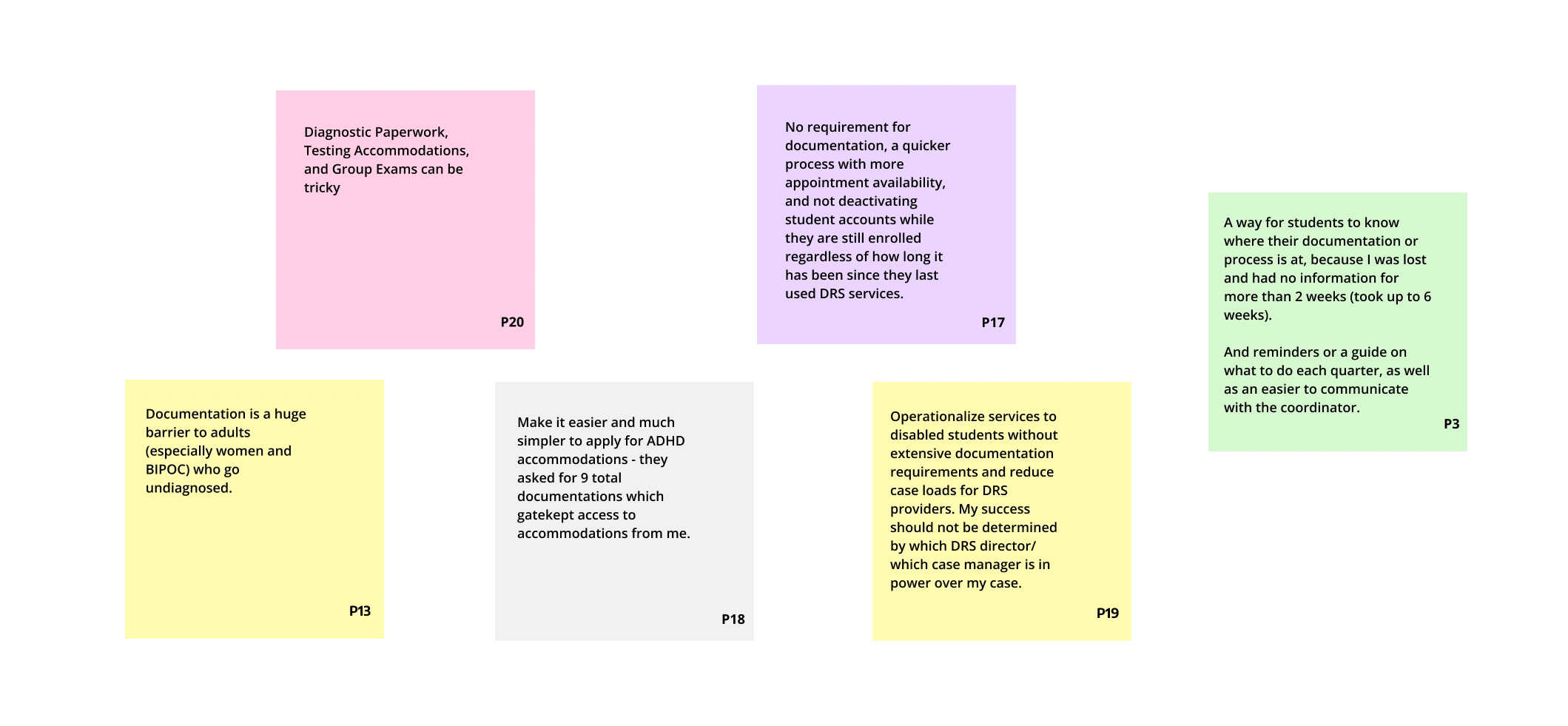
2. Transparency on accommodations
As the other theme with most responses, 6 responses also indicated that they'd like more upforth transparency when it comes to the types of accommodations provided by the DRS. Most of the student responses in this category echoed a lack of information access.
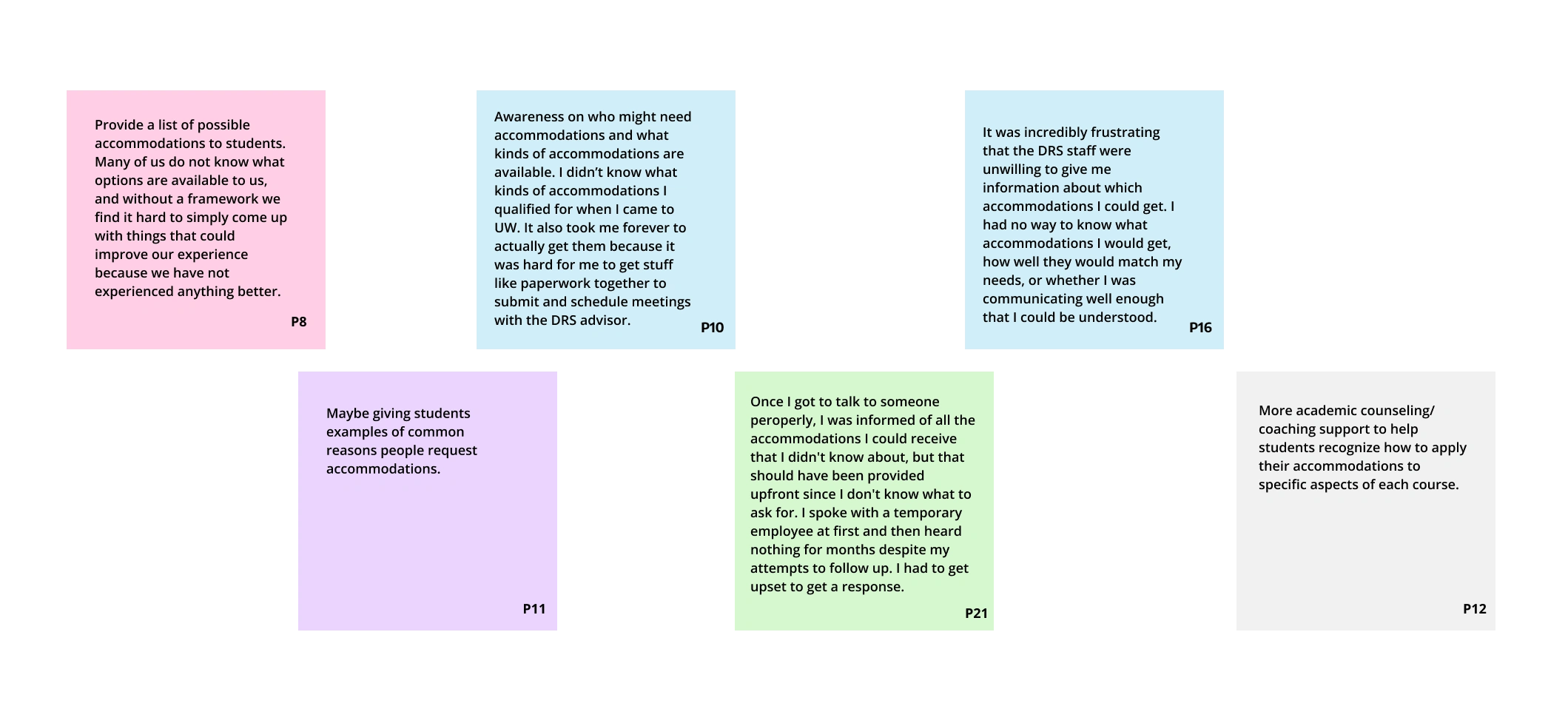
3. Unclear, tedious process
Some survey respondents also suggested that the current process for applying and implementing disability accommodations were unclear or tedious, with responses in varied stages.
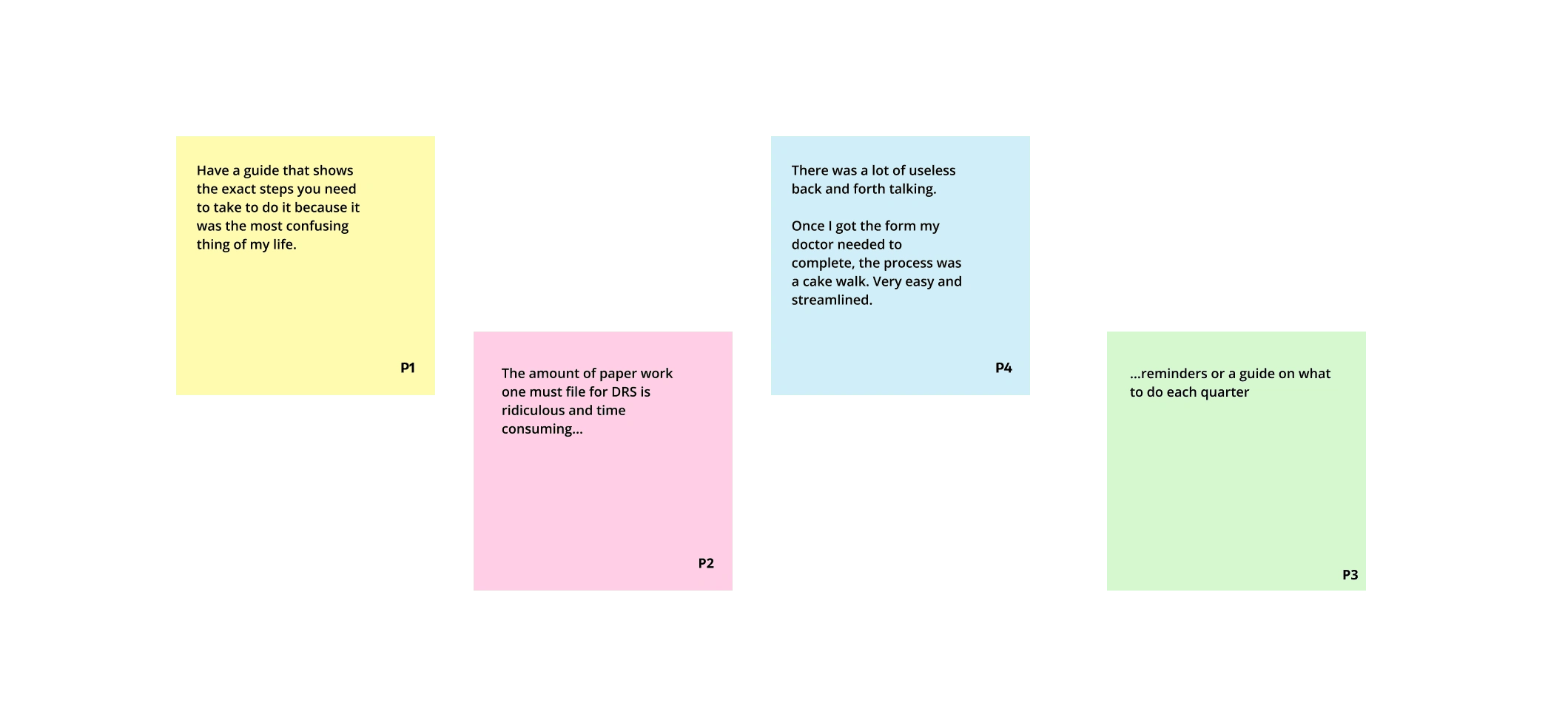
4. User interface
A few respondents noted the user interface of the website and myDRS form.
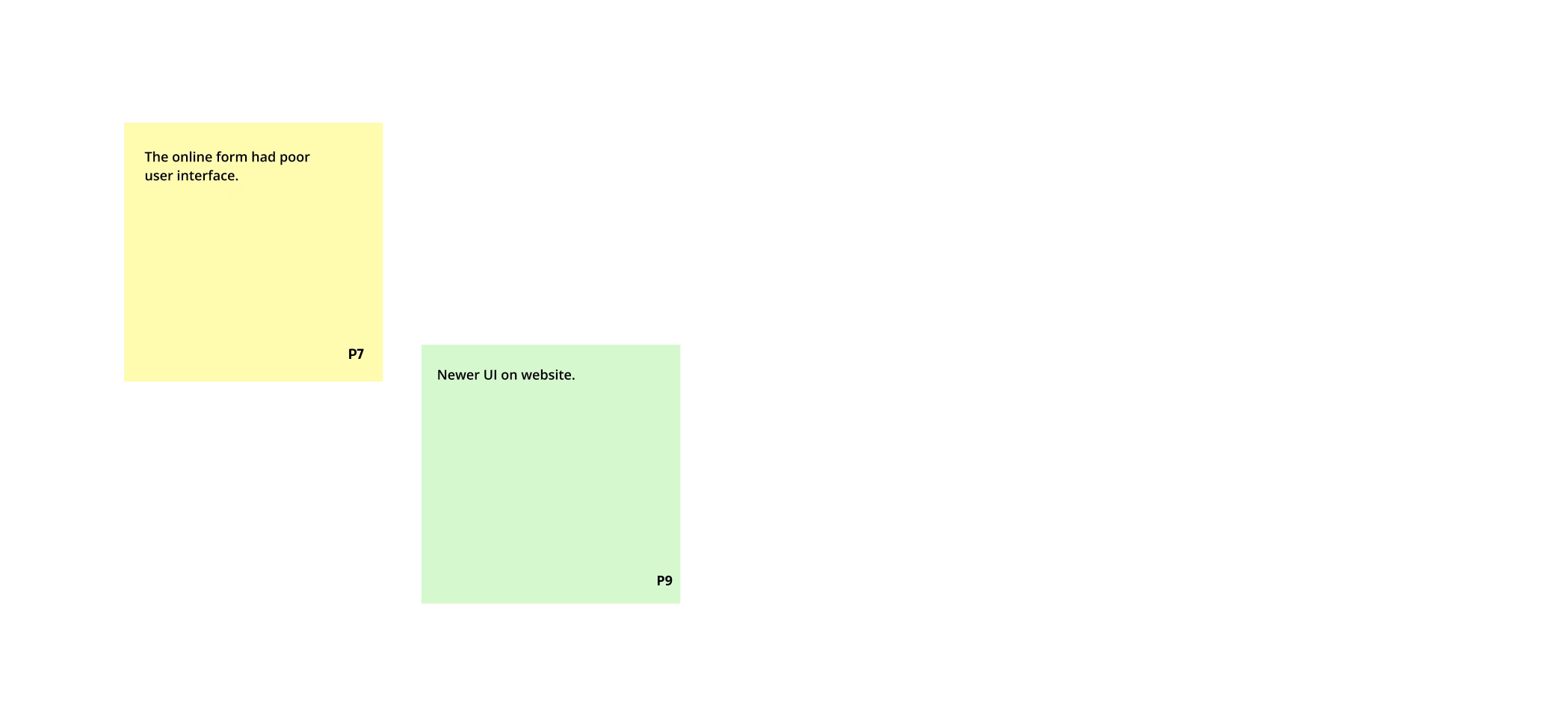
5. Communication issues
Some respondents brought up communication issues in its various forms thoughout their process.
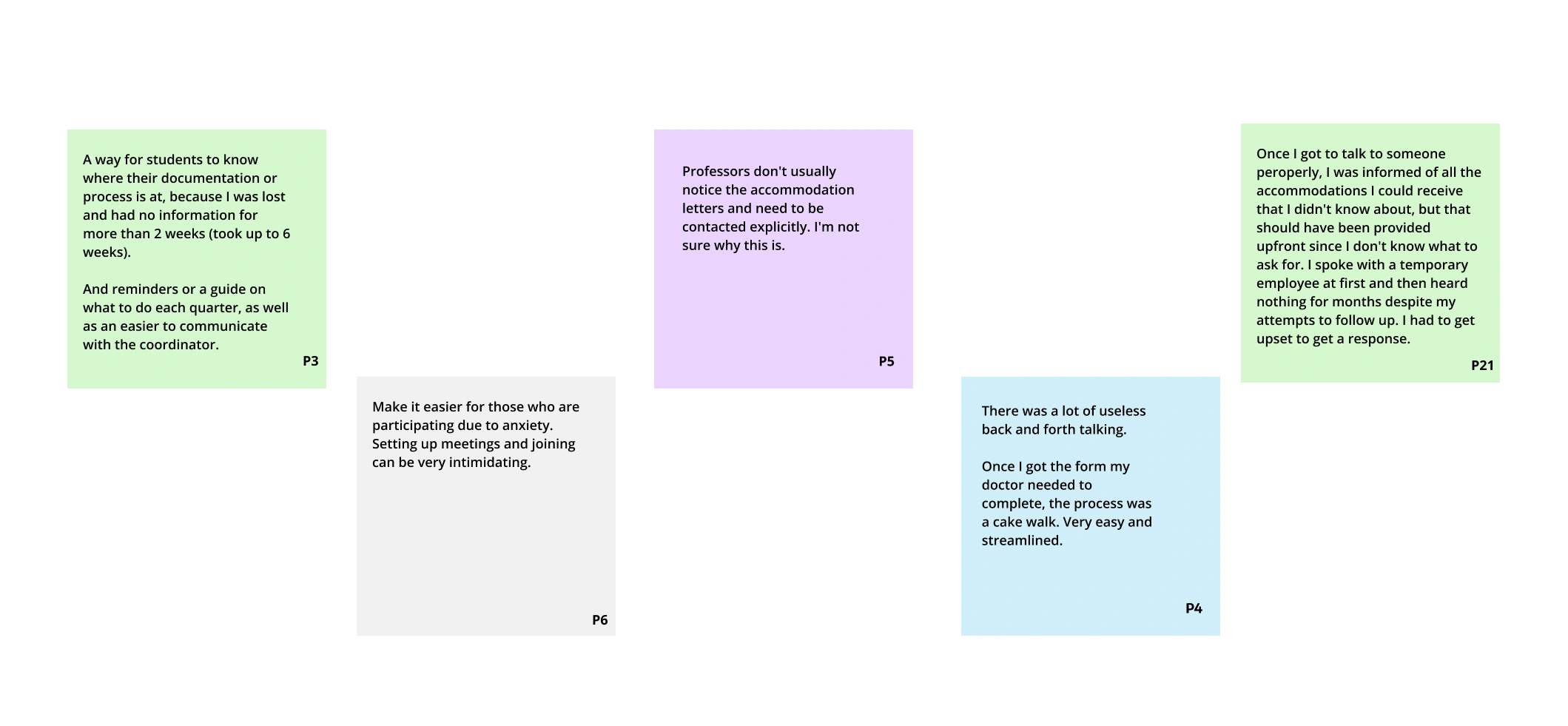
6. Delays / Lack of response
Delays or a lack of response was also a common theme found throughout responses.
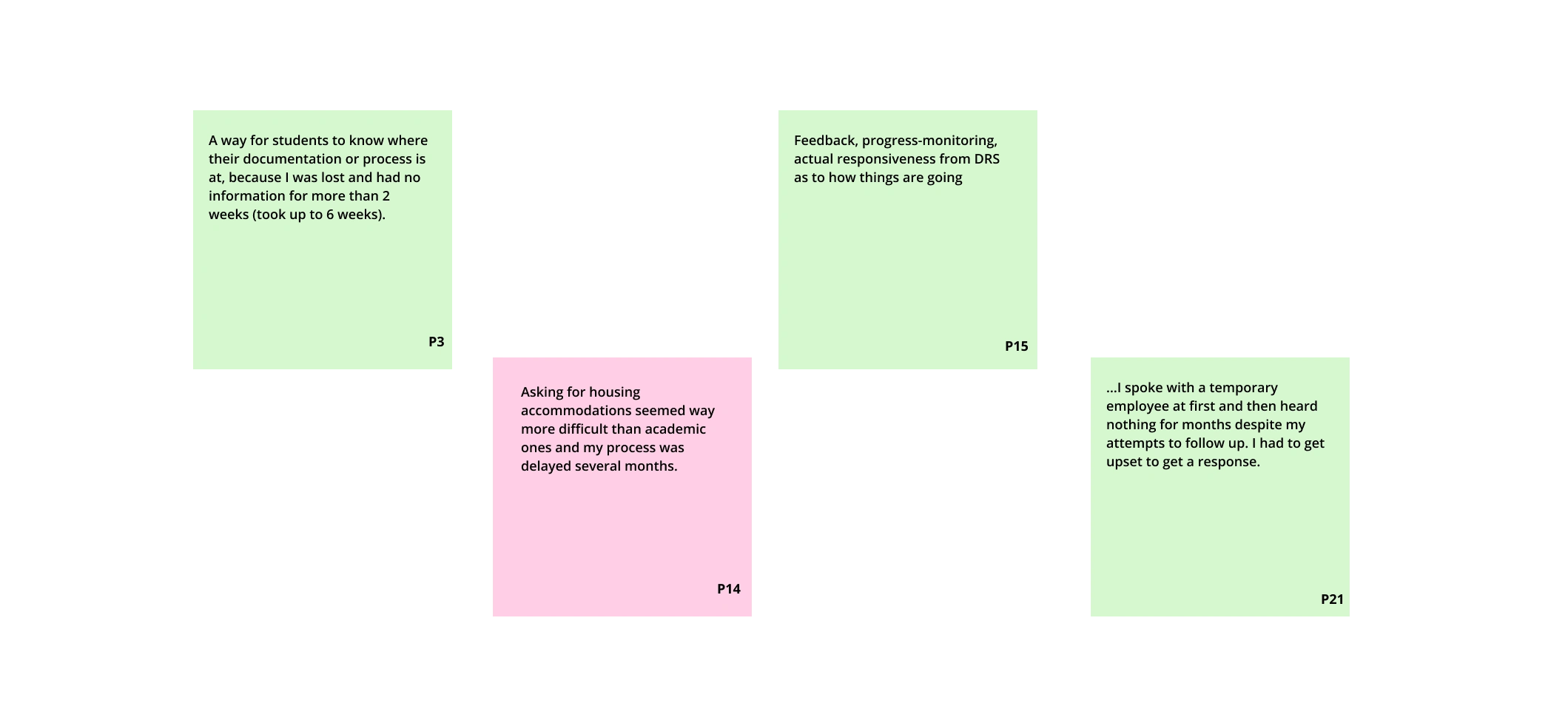
In combination with the survey results, an Artifact Analysis was conducted to determine the best possible and feasible solution (example: whether a redesign, feature updates, a whole new product, or something else entirely) to the problems stakeholders had. We compiled and investigated existing solutions (and/or tools) that aim to streamline disability accommodation processes for students in higher education.
This artifact analysis, together with the interviews and survey, helped decide what a feasible solution can look like - finalized as the DRS site redesign. The following are the various tools analyzed for the artifact analysis, based on how stakeholders currently communicate when it comes to disability accommodations:
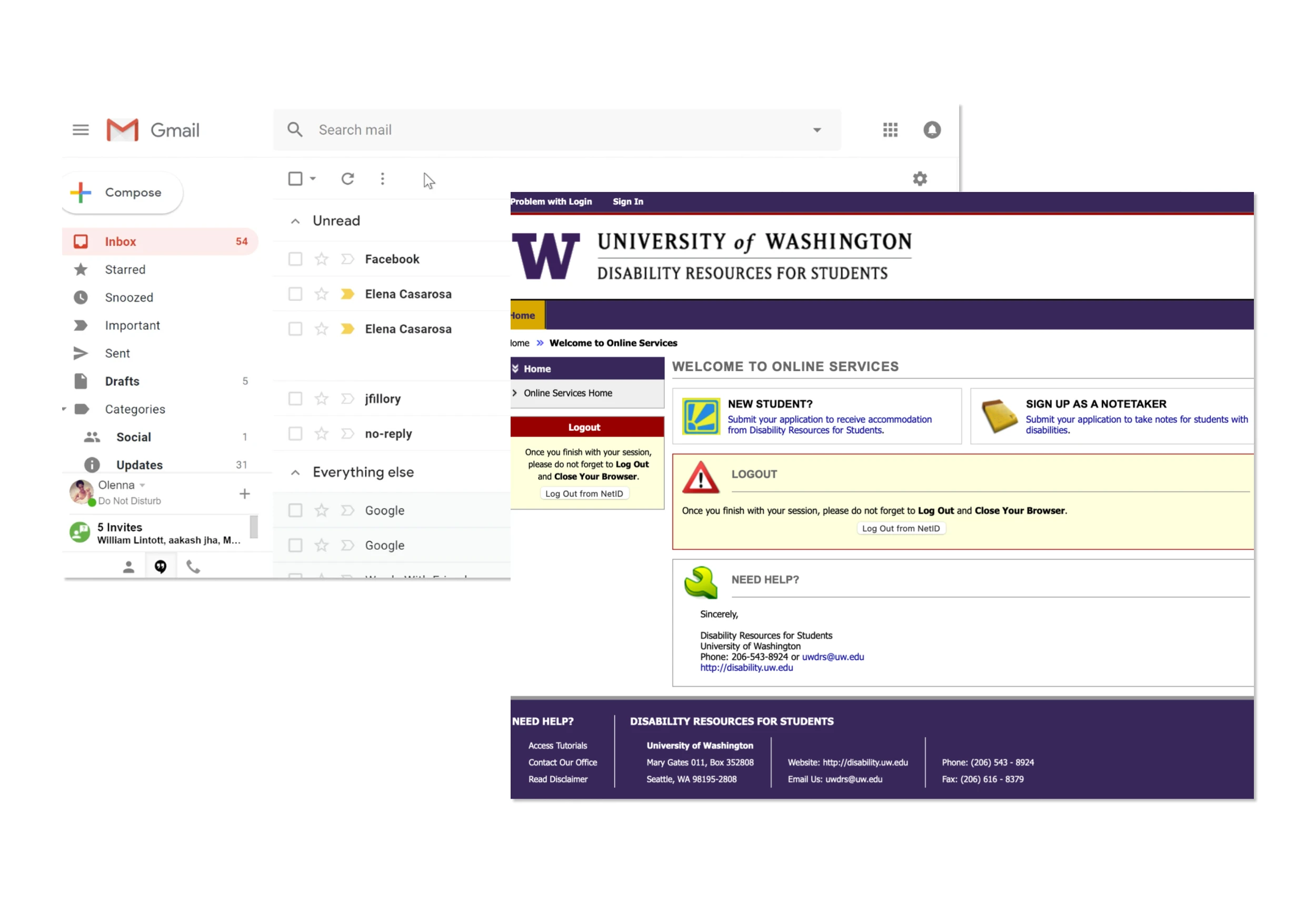
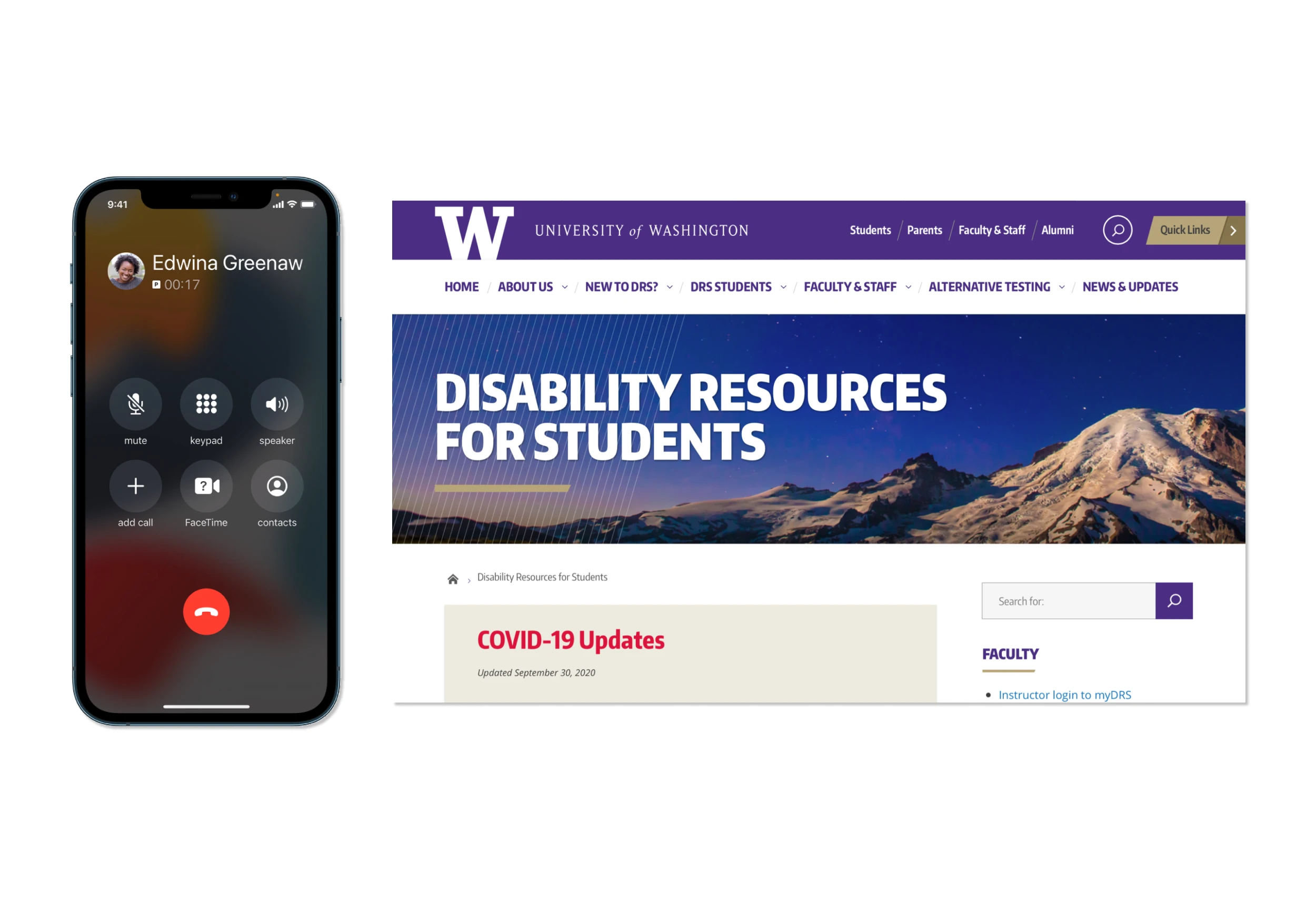
Empathize
From Interviews, we gathered feedback on current process from indirect (DRS Staff and Professors) and direct stakeholders (students) to investigate how changes in the process currently work for them and why changes may or may not help them.
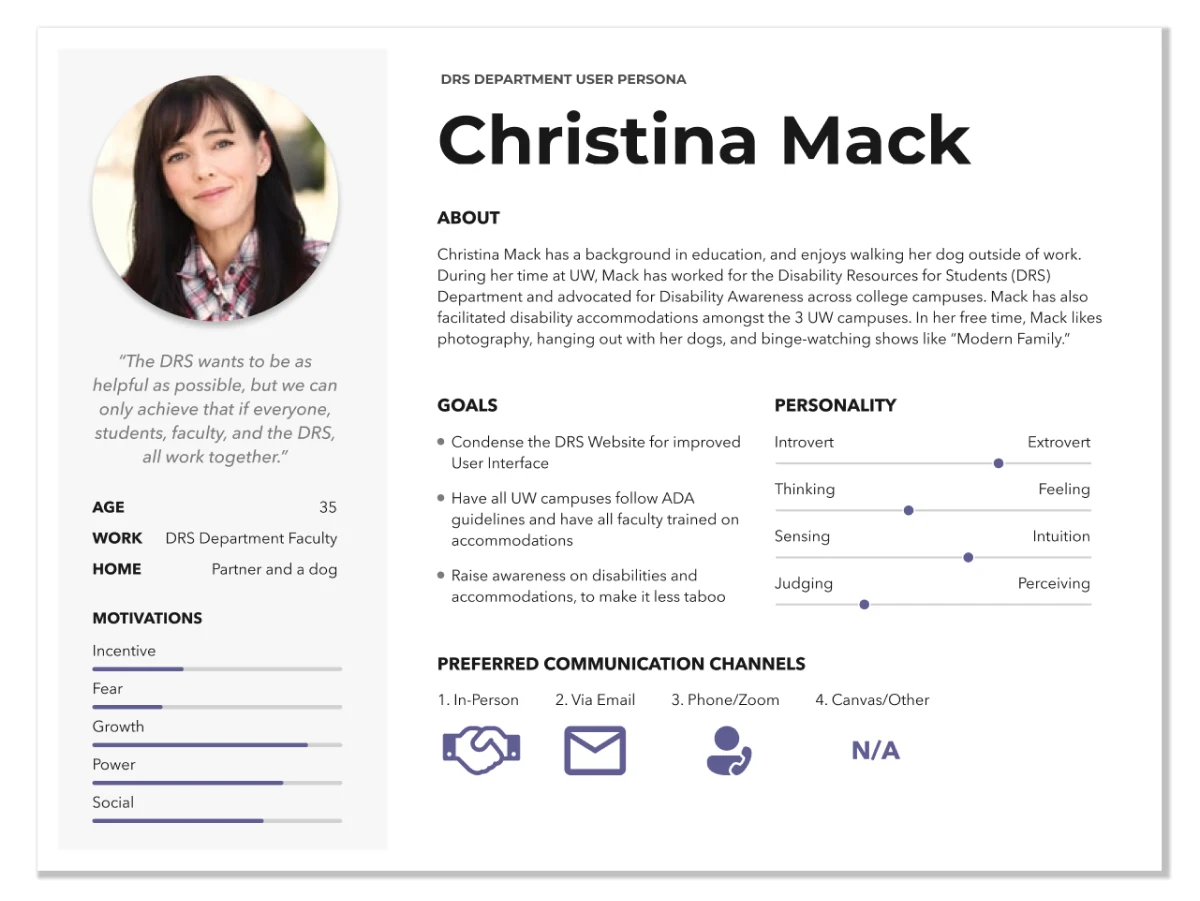
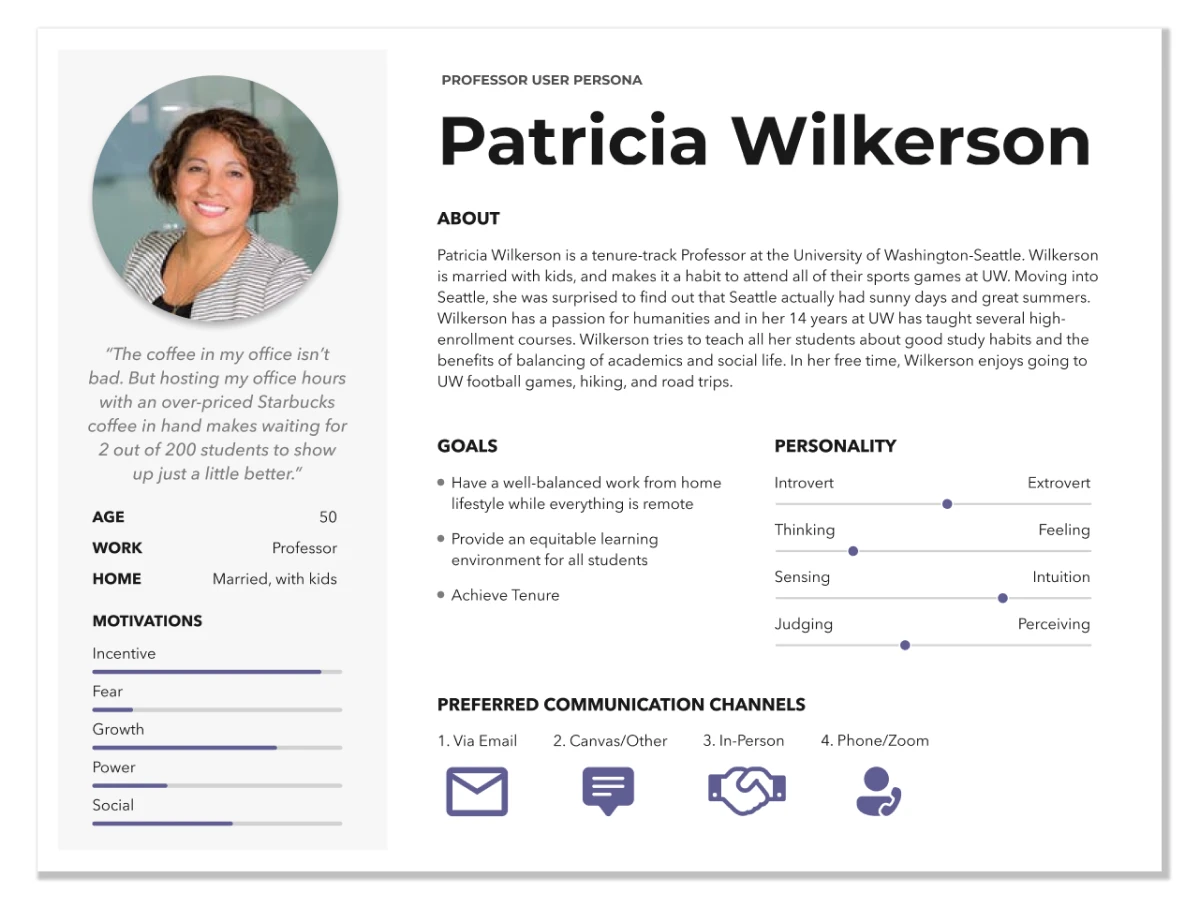
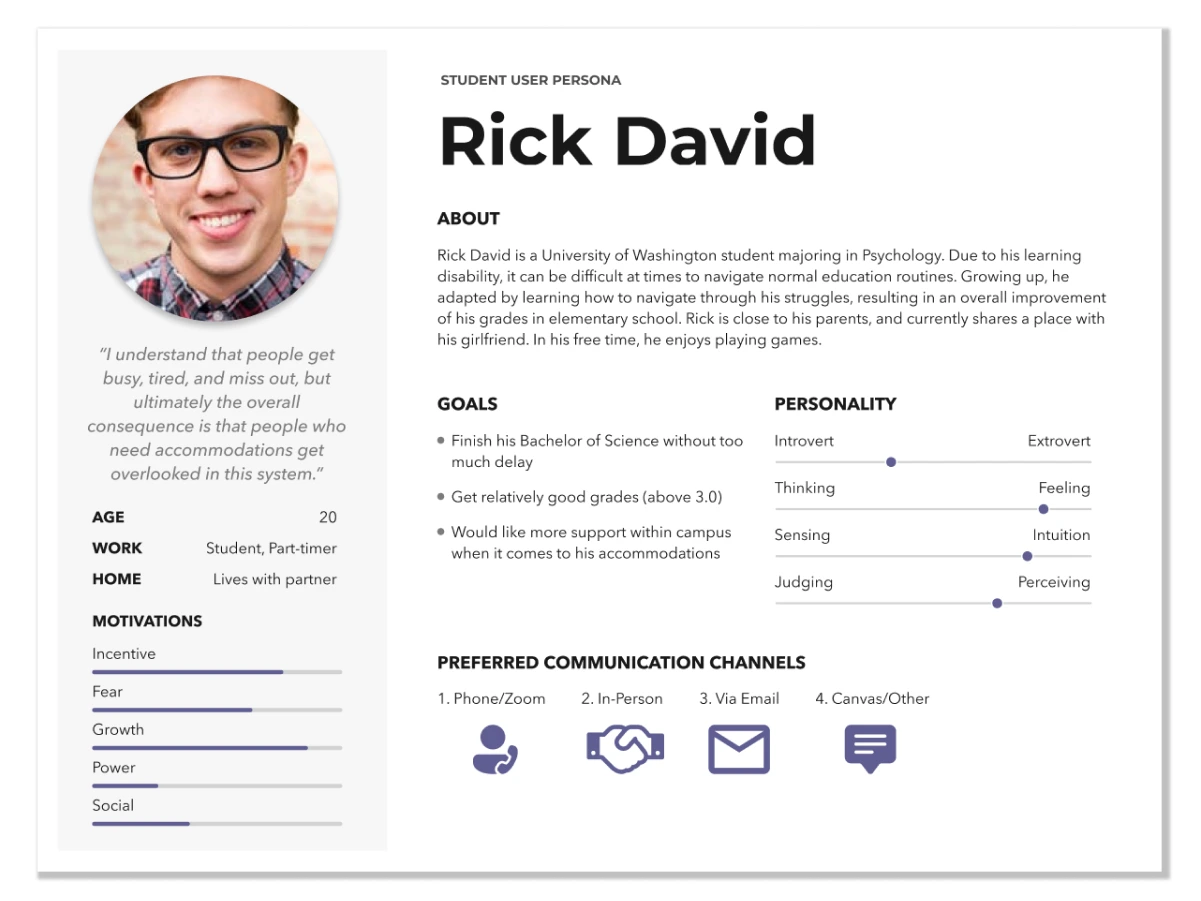
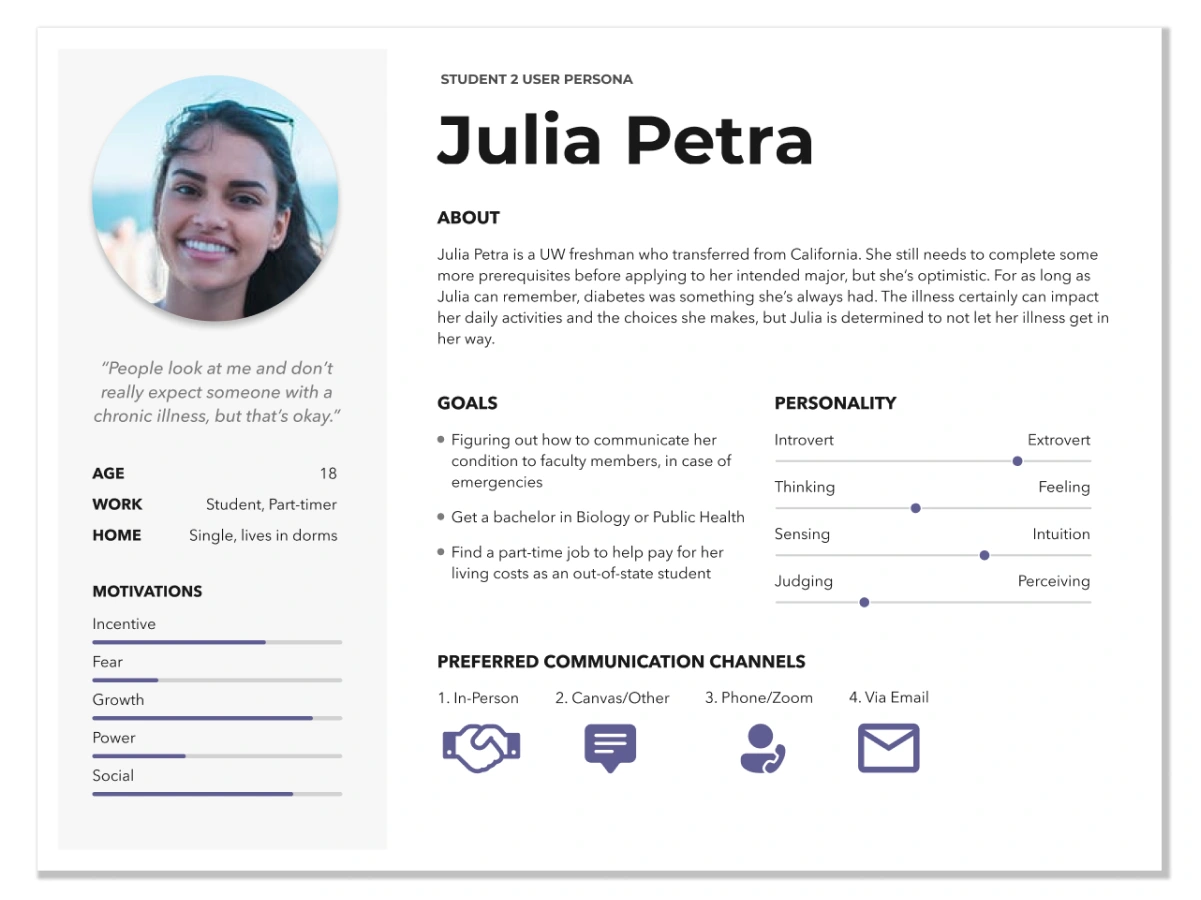
Another notable thing to note from the interview with Christina is that workload from other UW campuses, like Bothell and Tacoma, also gets passed on to the main campus in Seattle due to the lack of personnel and funding, compared to the demand for DRS services.
Information Architecture
The following sitemap was made while sifting through the DRS site to point out how the feature updates we were suggesting can be easily and realistically integrated into the website:
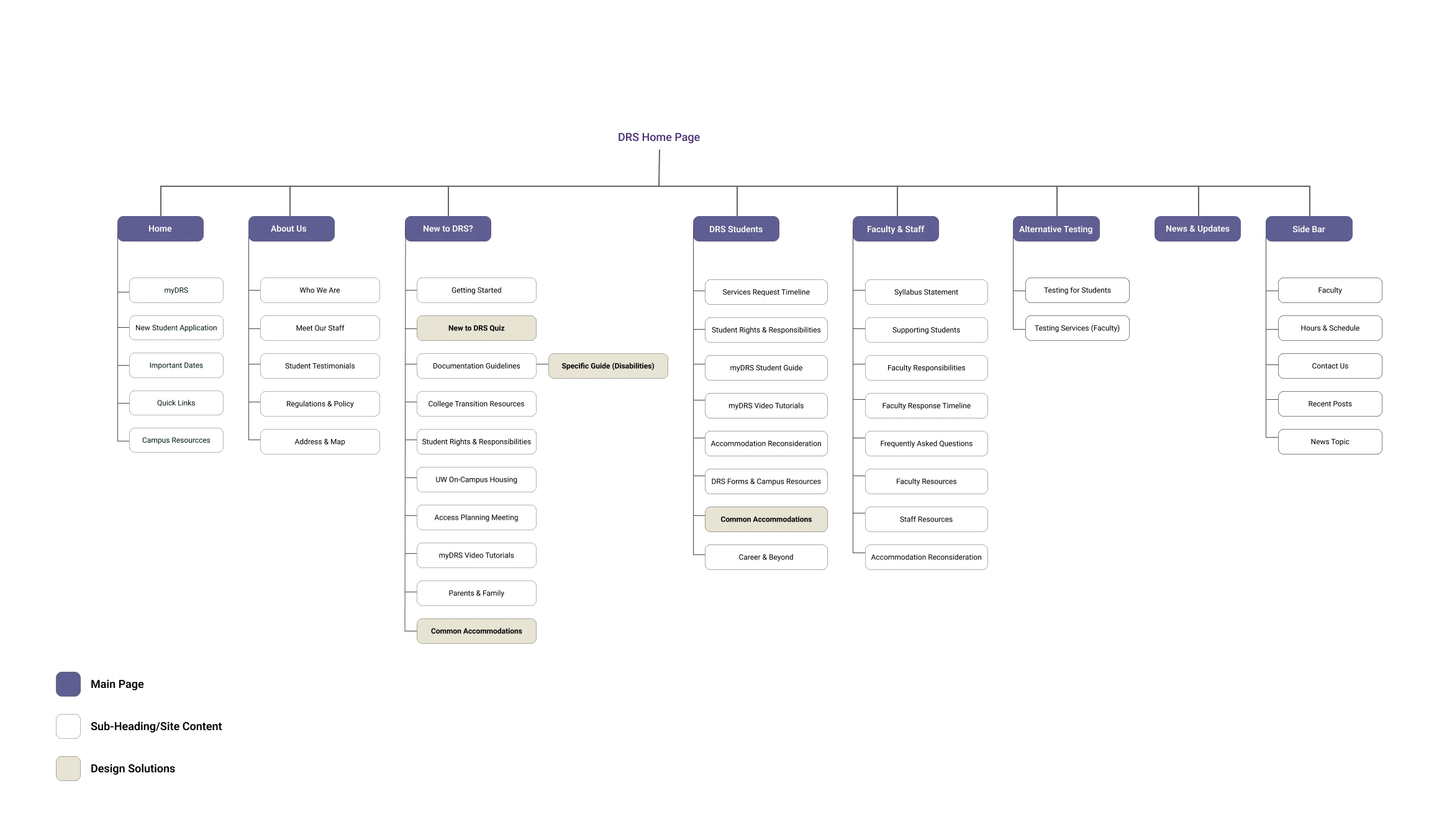
Chosen Solution(s)
After sketching some Lo-Fidelity designs, a Hi-Fidelity Design was finalized based on UW's brand identity, which includes their designated logo, colors, and fonts. Feature updates to the main DRS site was chosen out of all the possible artifacts as it was the most feasible option realistically, and it also aligned with goals the DRS had as secondary stakeholders.
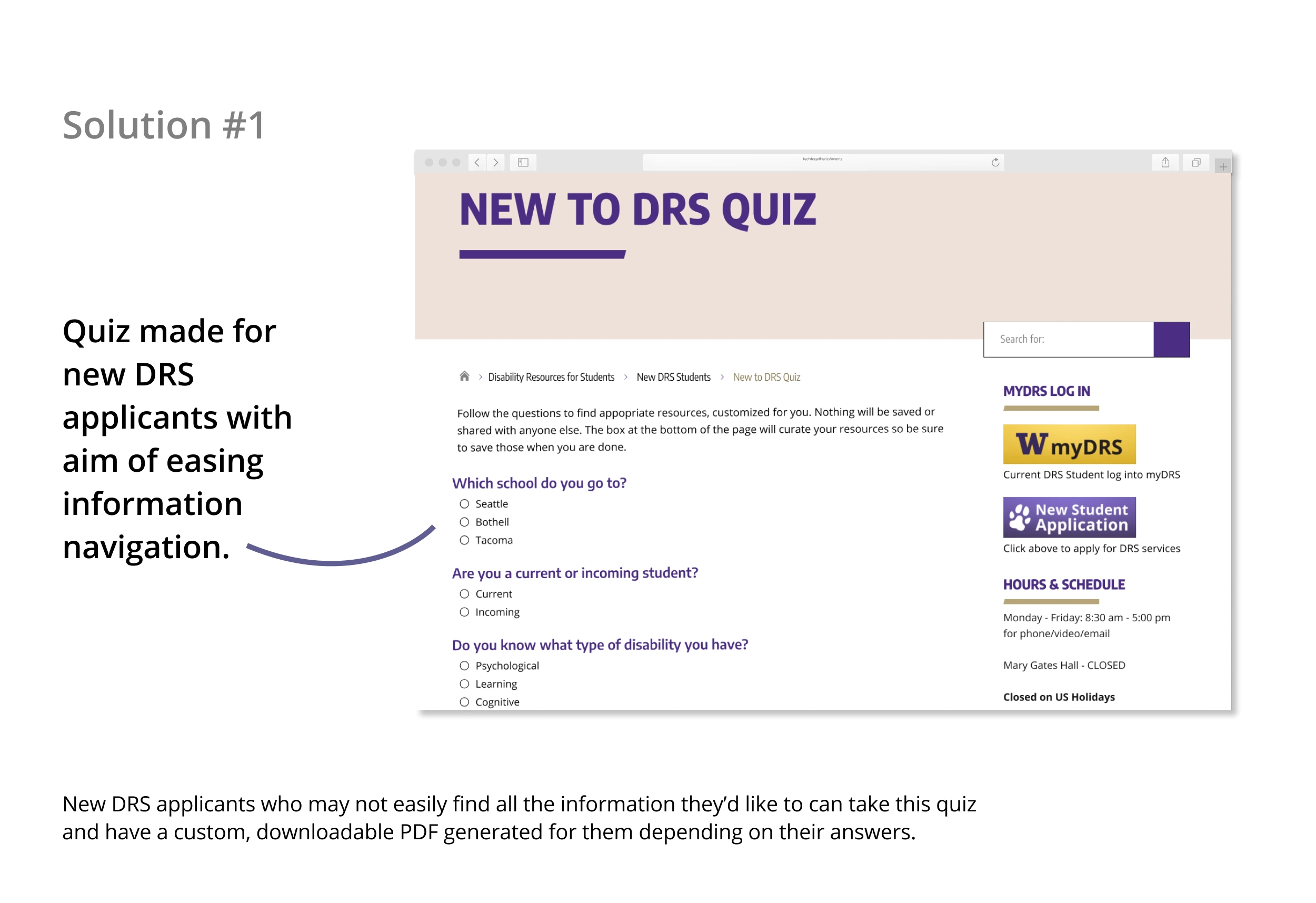
Solution 1: Quiz made for new DRS applicants with aim of easing information navigation. New DRS applicants who may not easily find all the information they'd like to can take this quiz and have a custom, downloadable PDF generated for them depending on their answers.
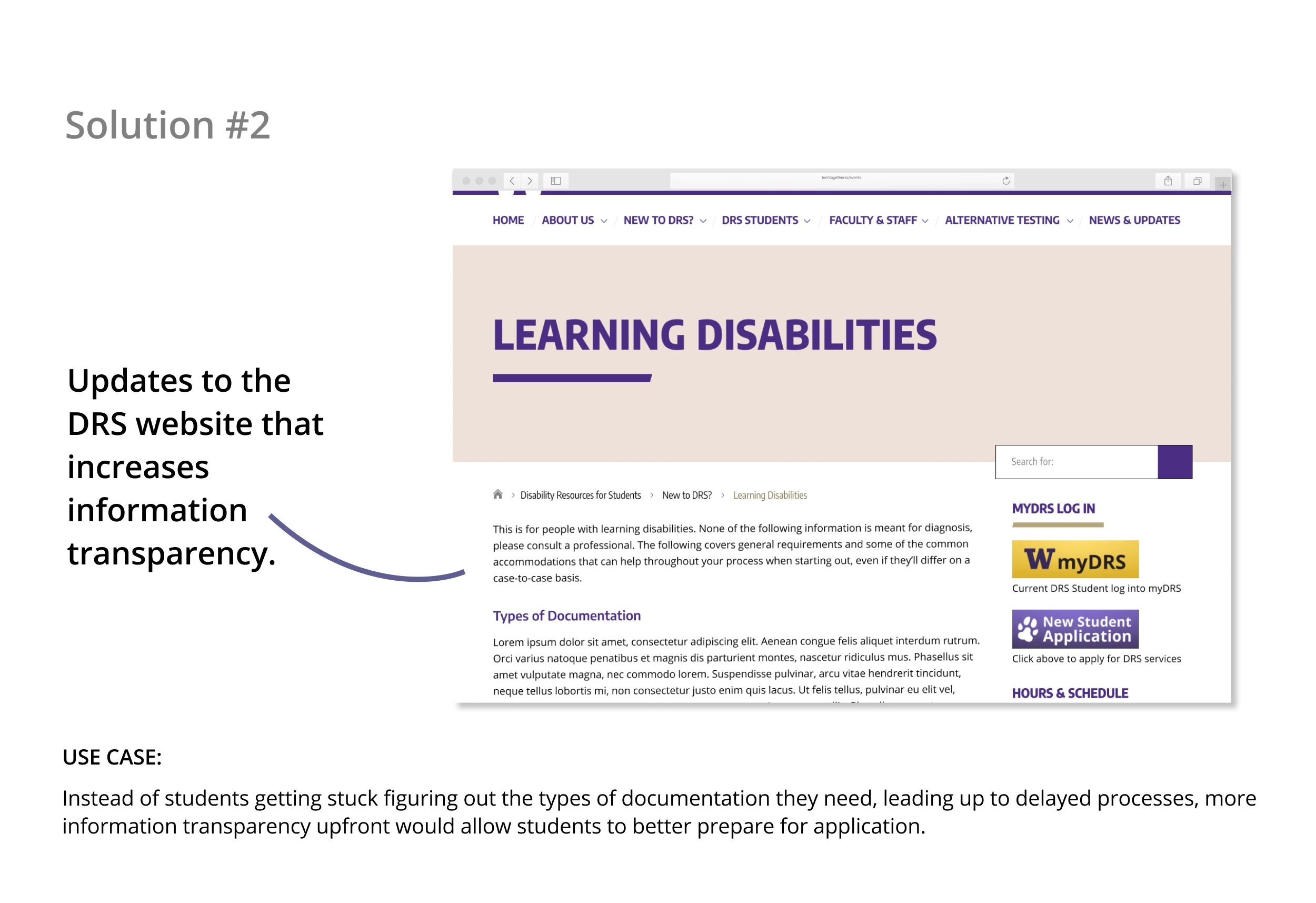
Solution 2: Updates to the DRS website that increases information transparency. Use case: Instead of students getting stuck figuring out the types of documentation they need, leading up to delayed processes, more information transparency upfront would allow students to better prepare for application.
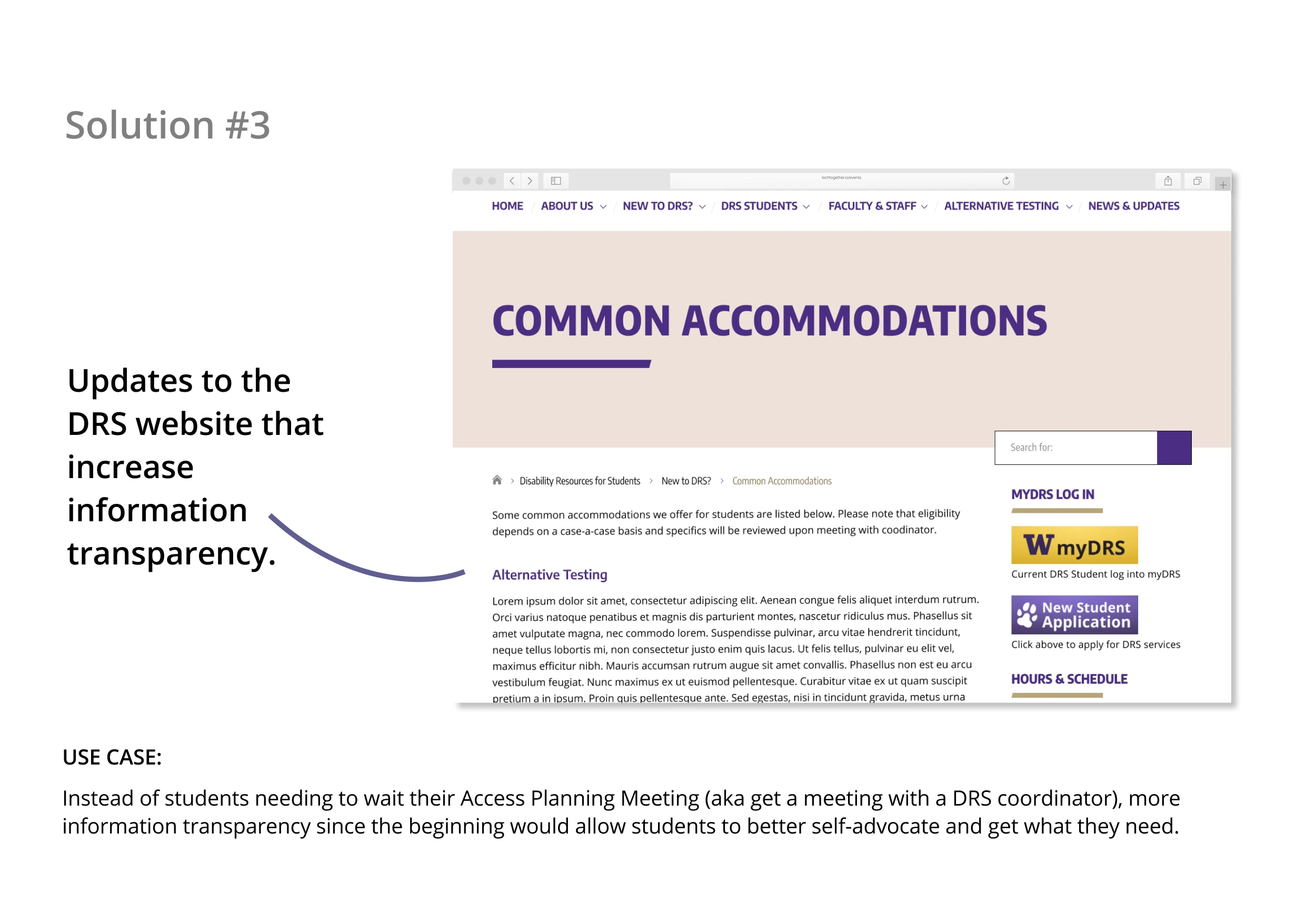
Solution 3: Updates to the DRS website that increase information transparency. Use case: Instead of students needing to wait until their Access Planning Meeting (aka get a meeting with a DRS coordinator), more information transparency since the beginning would allow students to better self-advocate and get what they need.
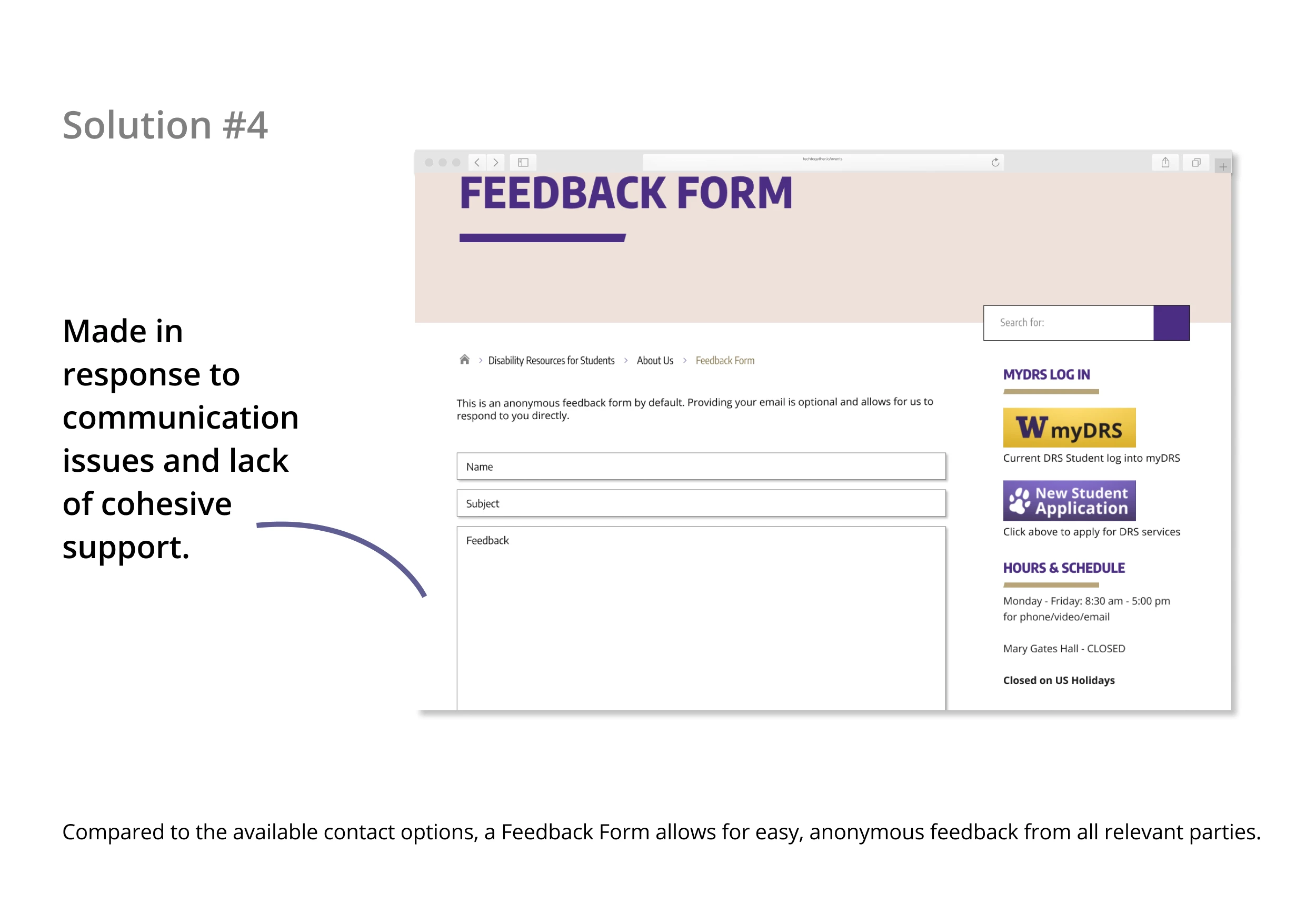
Solution 4: Made in response to communication issues and lack of cohesive support. Compared to the available contact options, a Feedback Form allows for easy, anonymouse feedback from all relevant parties.
Impact
In collaboration with the Student Disability Commission (SDC) in the University of Washington, my research and solutions were shared to the UW's Disability Resources for Students (DRS) as part of a movement towards advocacy. As a result of this, the DRS official site updated the Information Architecture of their Accommodations page to create more transparency for the 4000+ students who receive DRS accommodations across UW.
Lessons Learned
Learned how to better handle and present participants' sensitive information (such as considering the extent of anonymizing data).
Successfully transferred research findings into implementation, through considering feasibility in ideation.
What I Would Do Differently
As researcher, I would've ideally liked to take a more in-depth approach on coding the findings.
Some parts of the process that were split up between team members, transcription could be improved or more consistent for future references.
Like this project
Posted May 24, 2023
Project universal.ly was started at the University of Washington (UW) to help research and iterate on solutions that can help streamline disability accommodatio

